Before we get started, we have a quick announcement to make. Recent updates to the website have created a minor difficulty when it comes to securely sharing email addresses, making it hard for us here at Dear Azami to interact with our readers by taking submissions. With that in mind, we’re going to put a temporary pause on submissions for a few weeks as we lock in the new tech logistics – hopefully it’ll be sooner rather than later, and we’ll be able to bring that back quickly.
TINY LEADER: Glissa, the Traitor
CREATURES (10):
NONCREATURE (4):
NONCREATURE ARTIFACTS (14):
LANDS (21):
7x Swamp
6x Forest
Thanks for all you do for the community and for Commander,
Rob Bockman, who can’t believe Chalice of the Void is unbanned in this format.
This is the first time we’re looking at 49-card decks instead of 99-card ones, and that may be a little bit confusing – so if you haven’t heard of the “Tiny Leaders” format before, click through to that link and read up a
little. The basic details are that this is another variant format based off of Commander, created for two-player games much like the “French 1v1” rules
were but also substantially different in that it restricts the format to half-sized decks and converted mana costs of three or less. Its banned list can be found here and leaves off many key Commander offenders because they are already
ineligible for play simply by costing four or more mana.
The basic idea is that this can allow a much faster Commander-like experience, and even potentially opens the way for more competitive play if that is what
you want thanks to the formalizing of a 1v1 game – but it does so while retaining the feel and flavor of Commander and packaging it in a punchier new
shell. Normally we wouldn’t really consider this – after all, not once in the history of this column have we accepted a submission based off of the French
1v1 style of play – but as it seems like Tiny Leaders has really taken off lately, we’d take a look at an interesting submission and see what is going on.
Prison is a hard archetype to love, but it sounds like you are thinking of this more in the Weissman-style school of thought, wanting to build towards a
locked-down end game much as “The Deck” did back in the far forgotten days of Magic’s origins rather than building a locked-down boardstate where your
opponent cannot even take an action thanks to Winter Orb + Icy Manipulator and board-wipe effects. Stopping your opponents from being able to even take an
action is mean and no fun, but making sure that whatever action they might take is ineffective in the grander scheme of things is a fair part of winning
the game for a good control deck.
Since Tiny Leaders is largely a creature-combat format – I have yet to see a credible combo worth assembling and Storming off is as close to impossible as
really matters anyway – building a boardstate that focuses on killing creatures and getting rewarded is going to be a fertile space for this deck and is
half of what you’ve built Glissa around doing already. Most of my focus is going to be on tightening up the card choices and adding redundancy, but thanks
to the nature of the cards we’re going to have access to, it doesn’t really matter if your opponent’s permanents are creatures or not – they’ll still be
able to kill them either way, but Glissa only gets paid for killing them if they’re a creature. Black and green have the ability to kill any
permanent and grind out long-game card advantage, and Glissa is just the icing on the cake really – your spells should be very good at trading for an
advantage already. Honing that edge is all you really want to do, and that’s easy enough to do.
The first question that comes to mind is your budget. You’re playing a Deathrite Shaman but only have one fetchland, despite being able to fetch both
Overgrown Tomb and its original version, good old Bayou, so I am guessing that the restriction to just your on-color fetchland is not economic in nature.
Some Commander players think that playing off-color fetchlands is dirty pool – Cassidy, our former co-writer here at Dear Azami, definitely fell
into that camp – but the color identity rules don’t forbid it and practically speaking there’s no real reason they should when you’re just using off-color
fetches to fetch on-color duals. If you’re able to afford them and not opposed to playing them, I would start by suggesting this swap:
Out:
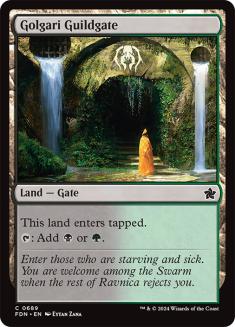
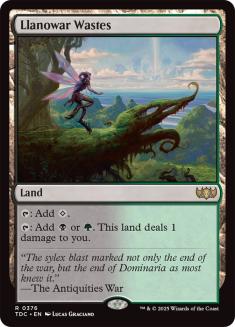




In:
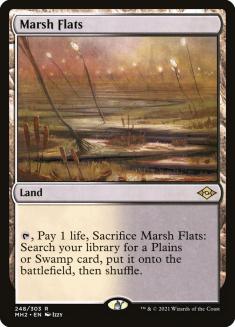
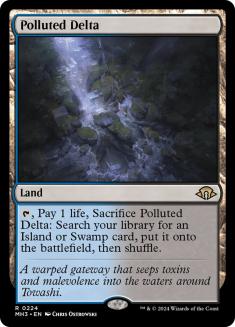
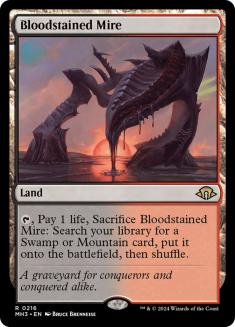
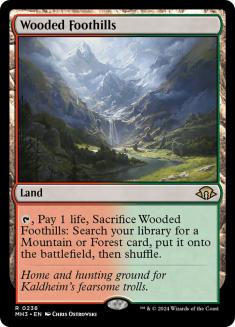
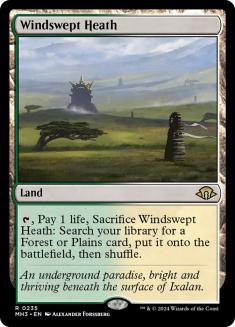

Those will slightly smooth over your mana at a minimal cost, but most importantly, they will allow Deathrite Shaman to always tap for at least one
mana over the course of the game, letting you use the quite-potent ability to jump to three mana on turn 2 before settling in to use its other modes to
deal damage and gain life. Alternatively, if you’re not able to make this addition or don’t want to for more aesthetic reasons, I’d suggest cutting the
Deathrite Shaman – without the ability to tap for mana at least once a game, it’s not actually that strong of a card for you to include here, and I’d
suggest replacing it with a Scavenging Ooze to replicate the parts you do like while having an overall-stronger card in that slot instead.
The rest of my suggestions aren’t going to come in either/or form; I don’t know why you only added one fetchland, and I’m generally hesitant to just throw
on a $100 addition in someone’s manabase that will ultimately have a relatively small effect in most games, so I wouldn’t really want to commit to picking
one side of this decision or the other based off of just the information presented. For the rest of the deck, I definitely know what we should be doing to
accomplish your objectives, so there’s no reading of tea leaves to interpret intent, and I can just commit to making the necessary changes. In the end,
we’ll split off into two forms – the “high-powered” version with expensive additions and the “low-powered” cheaper version.
The Land’s The Thing
Adding more fetchlands so you effectively have more Bayous is one thing, sprucing up this manabase is quite another. I’m actually going to start by shaving
a land – 21 out of a 49-card deck is effectively comparable to twenty-six lands in a Standard deck, 25.7 if you’re a stickler for the math and don’t like
minor rounding errors going unmentioned in the footnotes. We’re going to have some cantrips and your mana curve forcibly stops at three, so you don’t
actually need to have that much mana in your deck, you definitely want to make your first three land drops and probably want to make your
fourth land drop on turn 4 too, but hitting the higher reaches of the mana curve is actually just impossible in this format so we can cut a slot here if we
want to.
Out:
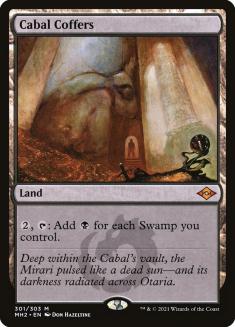




In:
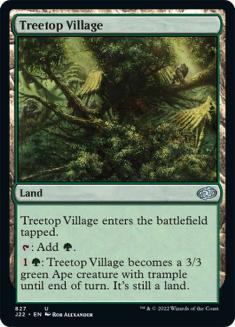
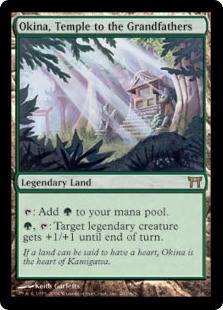
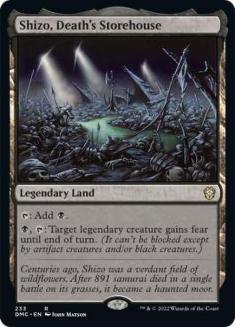

Cabal Coffers realistically just has one use – letting you recast Glissa after she’s died two or more times – and that’s not really a good reason to use a
land that is genuinely bad in your average game unless you have Urborg, Tomb of Yawgmoth. Admittedly, you can Expedition Map for that combo, and Glissa can
help you use one Map to find both sides – but that’s kind of shaky logic and I don’t really love the Map in this deck anyway. In your average early- and
middle-game situations, the Coffers won’t even tap for mana, and if I wanted a land that did that I’d start with a Maze of Ith. I dislike Maze in
general, but in a 1v1 format and in a deck that generally plays a lot of sweeper effects, it’d actually be quite good, and the only reason I find myself
hesitant to do so is the price on the card – it’ll go in the high-powered version but not in the low-powered version, as we’ll display in the end.
Cards You Can’t Recur
For Glissa’s purposes there are two kinds of cards: those you can’t recur, and those you can. We’ll lump the non-artifact cards together here, noting (as
above) that there’s one more swap in the cheaper, low-powered version of the deck – taking out Deathrite Shaman and adding Scavenging Ooze. The biggest
change is just going to come down to the level of fun you and your opponents are having, especially if you’re using this deck as a way to have fun in
between rounds of a more serious Magic tournament – and that’s cutting Liliana of the Veil. If you’re playing Modern you may very well be sick of her, but
the reason to cut her here is because she is on the short list of cards that can leave your opponent actually just locked out of the game entirely –
whatever they draw will either be discarded to Liliana or played uselessly without impacting Glissa’s board, since at a certain point of the game you’ll be
recurring whatever artifact is needed in order to kill any creature threat they might have happened to draw.
We’re down with answering any play, but making it so that plays are just not possible is un-fun here, and will make sure that this is not the enjoyable
palette-cleanser you’re hoping to use it for.
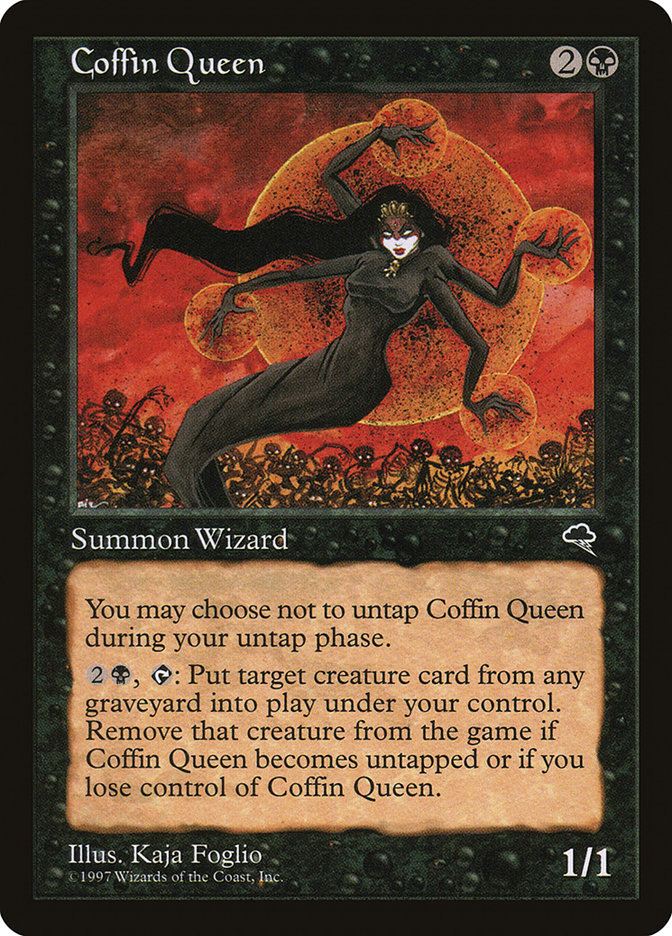


Coffin Queen is merely okay, and we can do better if we try – this slot is effectively shifting sideways to become an artifact so we don’t have to try and
protect a 1/1 body. In her place, we’re going to fill out the creature removal slot you’d given to Fleshbag Marauder by including its functional reprint
(or at least “functional” so long as you’re not Zombie Tribal somehow). Especially given how this deck is able to recur spent creatures, this addition is
very strong.


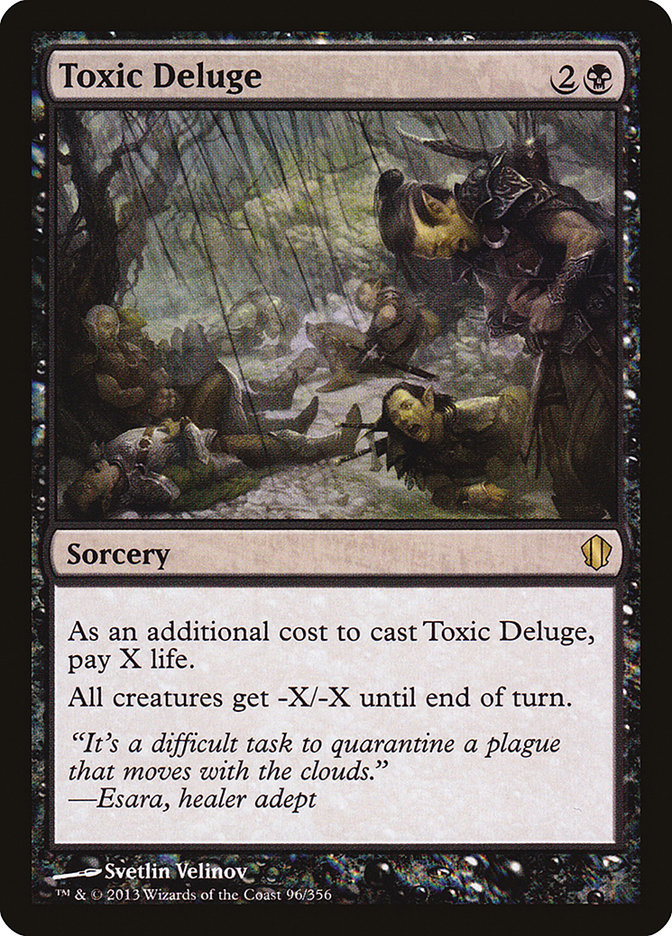
Let’s be honest here, Liliana is exceptionally strong – we’re only cutting her because of the un-fun lockdown state she can lead to, preventing your
opponent from fighting effectively because they can’t accumulate resources in their hand lest they lose them to Liliana. We’re likely to end up in a
recurring boardstate where you can kill a creature a turn easily enough thanks to Glissa buying back cards like Ratchet Bomb, so Liliana makes that lock
almost inescapable by limiting them to just the top of their deck as they try to access resources and find a way out of the semi-soft lock. Toxic Deluge is
one of the very best sweepers in the format and is on the very short list of cards you should absolutely be playing in a control deck, so we’ll add it in
here.



Wake the Dead is cute mostly because of how it interacts with other cards – you’ll definitely gain card advantage off of it and almost certainly kill at
least one opposing creature, all without that much work to set it up. That said, it’s still not really doing anything you want to do, so I’d
rather have a non-situational card instead – and you’re not playing the best removal spell in the format, given that Abrupt Decay is basically an
uncounterable instant-speed Vindicate since you’re not very likely to target your opponent’s lands with it. We could go even further and add in Smother as
well, but I like that most of your removal spells are artifacts (which you can recur), versatile (able to handle non-creature permanents), or both – Abrupt
Decay fits in with the best of both worlds, while Smother is merely 1B: Kill Any Creature… and we’re already doing better than that.
Artifacts of the Matter
Here we come to a minor divergence, based on the fact that we’re building two versions at once. The “high-powered” version, which is free to play the more
expensive cards with a $20 price tag, has one fewer slot – we added a Maze of Ith to replace the Cabal Coffers we cut, which in the low-powered version
becomes an extra slot for another bonus artifact later on. We’ll now make one more divergence: in the high-powered version we have a bunch of fetchlands,
so that deck can make excellent use of the quite-expensive Sensei’s Divining Top. Without the extra fetchlands – and the extra price insensitivity
that it takes to justify adding a hundred dollars of fetchlands to improve your manabase – the Top won’t be as good or as relevant, and we can find a slot
for something more fun instead.
So in the high-powered version we’ll have a Maze of Ith and a Sensei’s Divining Top; in the low-powered version we’ll instead find room for a Viridian
Longbow – a bit expensive to equip, sure, but it’s a heck of a way to take advantage of your Tiny Leader’s natural deathtouch – and an Engineered
Explosives. I like EE as an additional redundant copy of the Ratchet Bomb / Pernicious Deed effect, especially since it has the extra selectivity of
working on exactly one mana cost rather than Deed’s “X and lower.” It’s not absolutely ideal – since you’re restricted to two colors of mana, you can never
convince it to kill a three-drop – but unlike the other artifacts you’re using for this task, it just takes mana to put to work, not time and
mana. Time equals damage, after all, when you really need to handle the beatdown.
So Cabal Coffers became either Maze of Ith or Viridian Longbow depending on which version of the deck we’re discussing, and Ichor Wellspring became either
Engineered Explosives or Sensei’s Divining Top. Since we can’t really sacrifice artifacts on demand, we’re not going to consistently get a second card out
of it or be able to recur it, so it’s not actually that interesting to us as a card-drawing spell – and which card we replace it with depends on which
version of the deck we’re building towards.
The rest of the changes will fit in both decks:
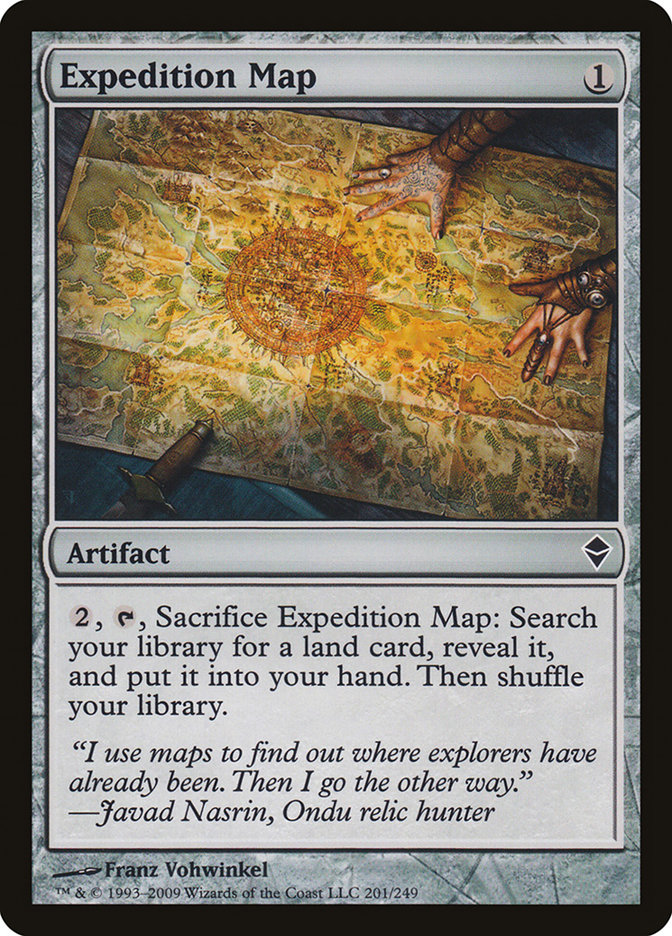

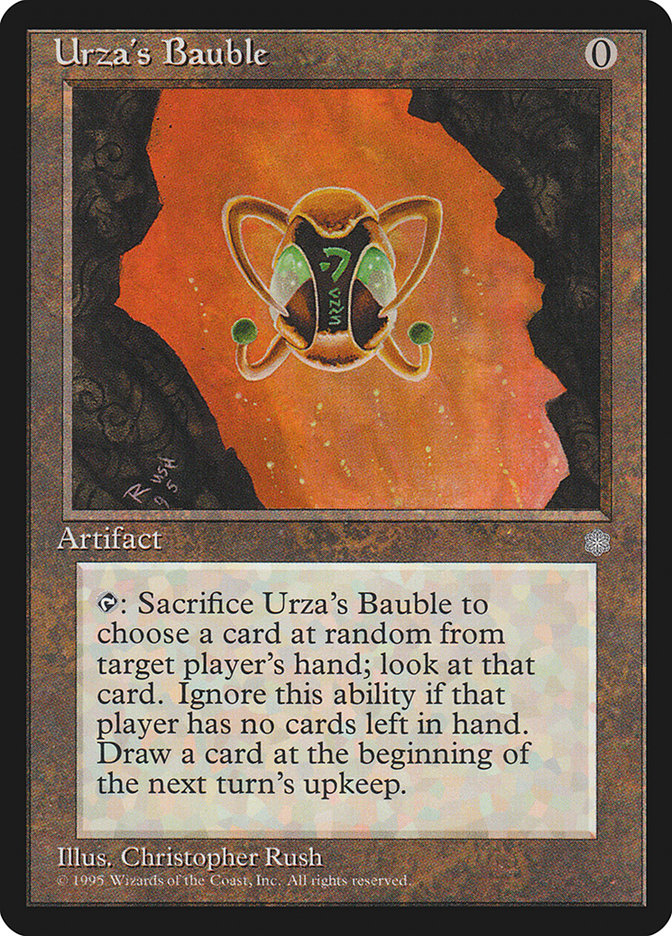
We no longer have any lands that really require us to tutor for them, as the Coffers + Urborg pairing did, so we can swap out Expedition Map in
favor of a card that is more generically favorable with Glissa in play. Urza’s Bauble is certainly not very exciting, but like the Mishra’s Bauble
already present in the deck, it allows us to turn any creature-removal effect into a cantrip with Glissa around, and that’s an effect worth playing as many
copies as we can reasonably grab a hold of. For zero mana, that’s just those two – if we were willing to spend one mana, we could have more thanks to
Lodestone Bauble, but we’re stopping here because it is no longer a profitable trade-off of deck slots for access to that ability over the course of a
game.
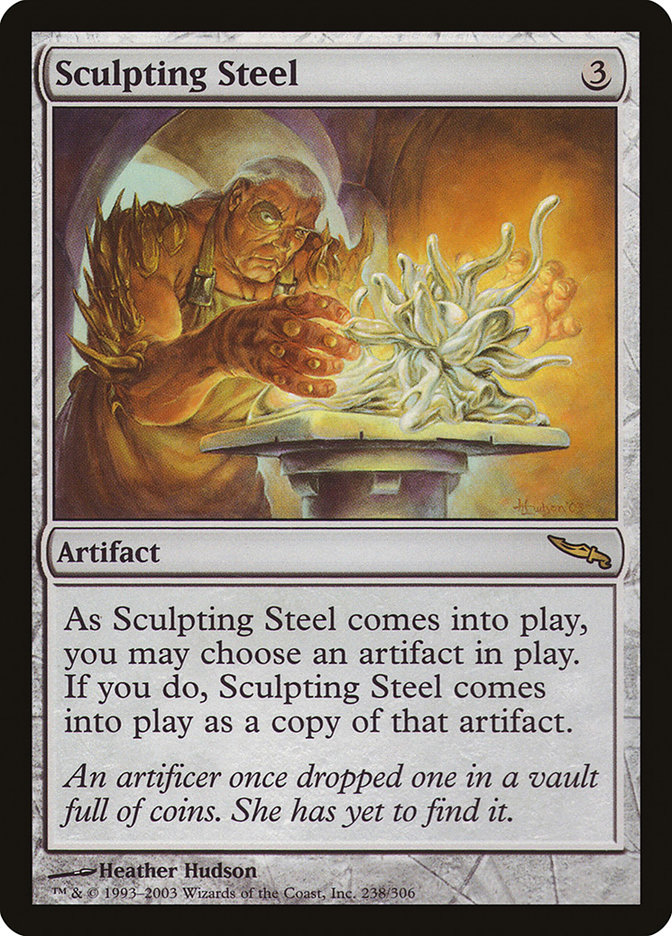

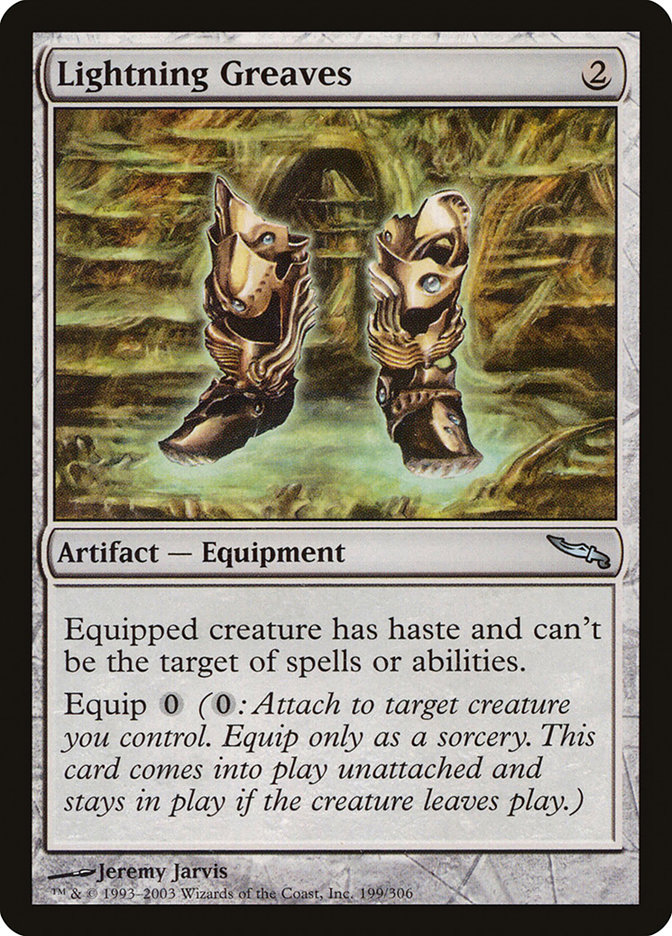
Sculpting Steel is generically good – sure, any artifact you’ve drawn will be good enough to want another copy of, that’s kind of how your deck works – but
it’s not actually important. It feels to me like this is just here so you can Tangle Wire harder over the course of a game, and other than that
it’s not really doing very much. Considering how important keeping Glissa in play is to your strategy, adding Lightning Greaves to protect her from
pinpoint removal will help make sure you can keep her in play to block with and keep that stream of free artifacts flowing – without Glissa in play you’re
probably just trading one-for-one, and as good as playing The Rock may be, we’re hoping to do more than that. Lightning Greaves lets us plan to do more
than that, not just hope, so it’s well worth the slot.
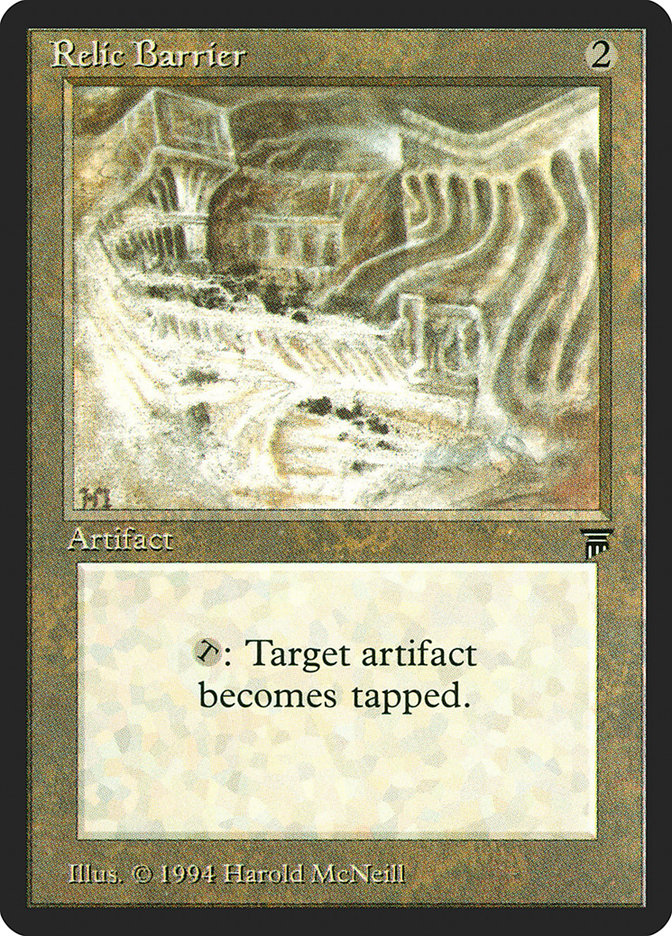

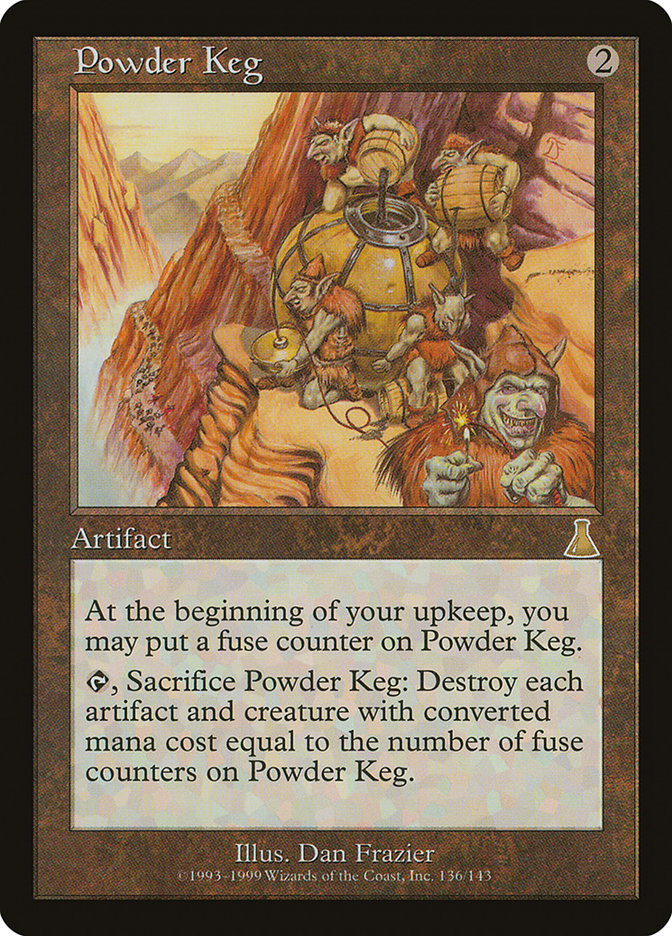
Relic Barrier kind of stumps me here, since I don’t see Tiny Leaders being so artifact-heavy that this Icy Manipulator-style effect is really going to
help; I suspect this is a holdover from a prior version with Winter Orb, or perhaps over-contextualized for a local area metagame, but either way the slot
calls out to me for replacement with a card that is more in keeping with your overall plans. Ratchet Bomb was one of your better cards and there’s another
card that is functionally quite similar, Powder Keg. The Bomb is better – it can kill planeswalkers and enchantments, while Powder Keg can kill an animated
land but Ratchet Bomb cannot, and being able to take down whole other classes of key permanents makes the newer version the far better card. But for two
mana and some time, either one will do for blunting a creature attack, and against most Tiny Leaders decks you’ll find them interchangeable.
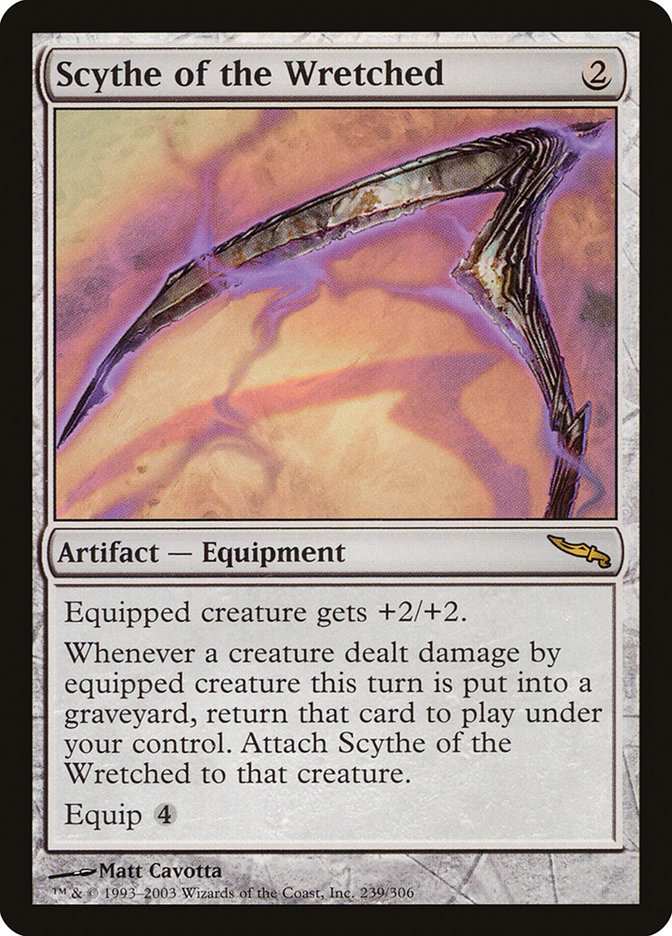

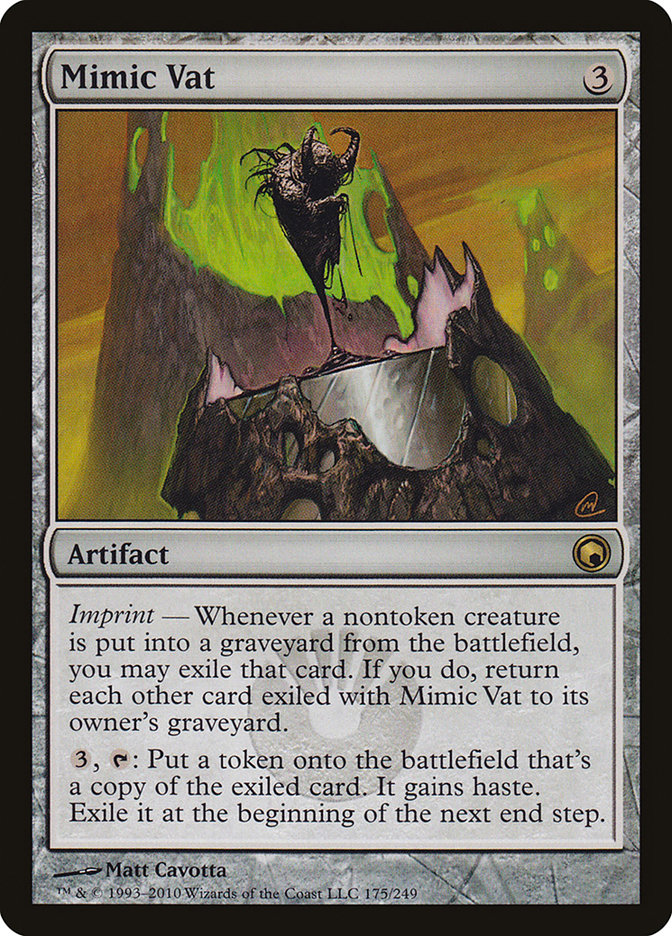
Scythe of the Wretched is definitely a win-more card in this deck, and unfortunately it’s a rather expensive one – four mana to equip on top of two to cast
it is kind of a pain, and then on top of that you have to usefully attach it to a creature and have that creature kill something in combat before
it’s doing more than just giving something +2/+2. If we can avoid having to equip it to something, we should – this deck does not really focus on putting a
lot of creatures into play and attacking or blocking with them – and we can do better if we try. Combining this slot with the one we cut with Coffin Queen,
we can add Mimic Vat in their stead and do what each was trying to do far more effectively – whether it’s capturing their best threat so you can keep a
sturdy blocker on defense or copying one of your own utility creatures, Mimic Vat is more effective and more powerful than either of those cards and can
get downright nasty if you manage to snag Merciless Executioner or Fleshbag Marauder with it.
Normally we’d cut things off here with all of the substitutions made, but Tiny Leaders is an odd variant of Commander – it allows a ten-card sideboard as well, and you didn’t provide one in your submission. Trying to figure out a sideboard is downright weird for Commander, because there
is just so much open space, but Tiny Leaders is somewhat more defineable thanks to the three-mana-cost restriction considerably narrowing the span of what
is possible. Combo decks don’t really exist but are not exactly impossible, merely improbable, and most of what we need to do is be able to shift
away from this deck’s focus on killing opposing creatures and addressing what we want to do when we have to do something else instead. And the closest
thing there is to a valid “combo” against us is likely red burn spells – sure, you can’t play four copies of each card and you’re limited to cards that
cost three or less mana, so it’s not an ideal port to compare the two, but decks like this one have historically been generally weak to burn-style decks so
we should address that somewhat as well while we’re at it.
We want to be able to control an opponent’s hand if that is the axis we need to fight on, we should try not to die to burn spells if we don’t have to, and
we need to address the fact that against more-controlling decks we need to be able to cut the dead cards and shift towards a more beatdown role instead.
Those are the major riffs that the sideboard will need, and thus we can add the following:
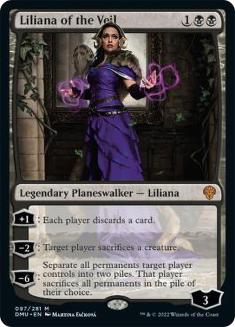
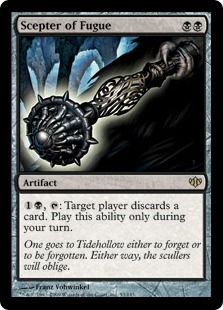

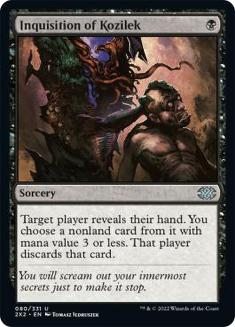

While Liliana was too unfair for generic use against people who were trying to compete with creature decks, she’s exactly the kind of card we’re after when
facing off against non-creature decks – and thus we didn’t really cut her, just move her to the sideboard. Disrupting Scepter was historically a part of
The Deck’s famous end-game state, but three mana is too much if we don’t need to settle for it – a recent printing lets us get the same effect for two,
given that we’re already playing black mana. And the two pinpoint spells both say ‘take any spell’ in this format, letting us take advantage of pinpoint
discard to disrupt the opponent or force our plan through as appropriate.
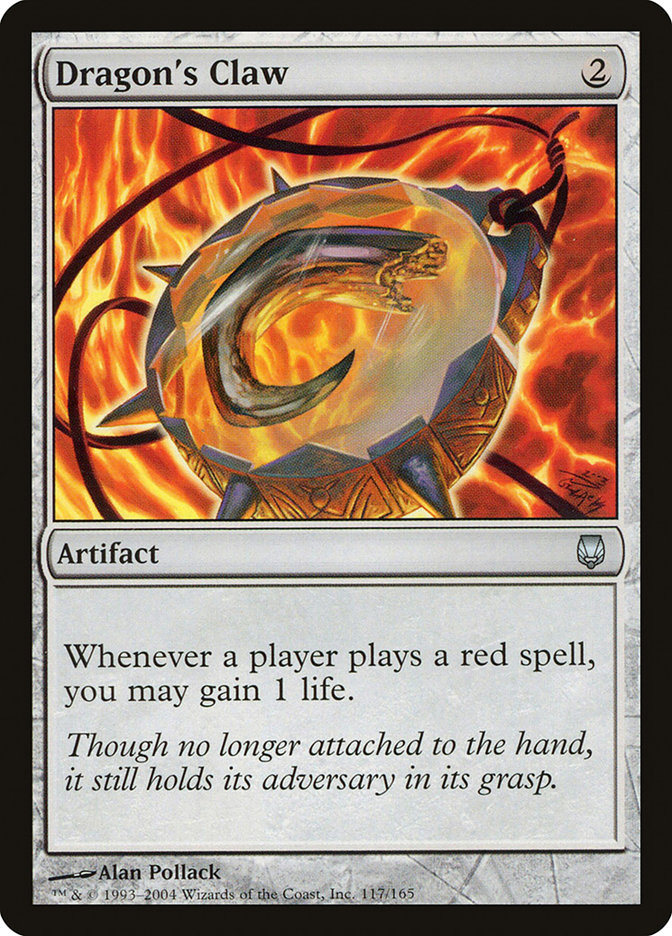
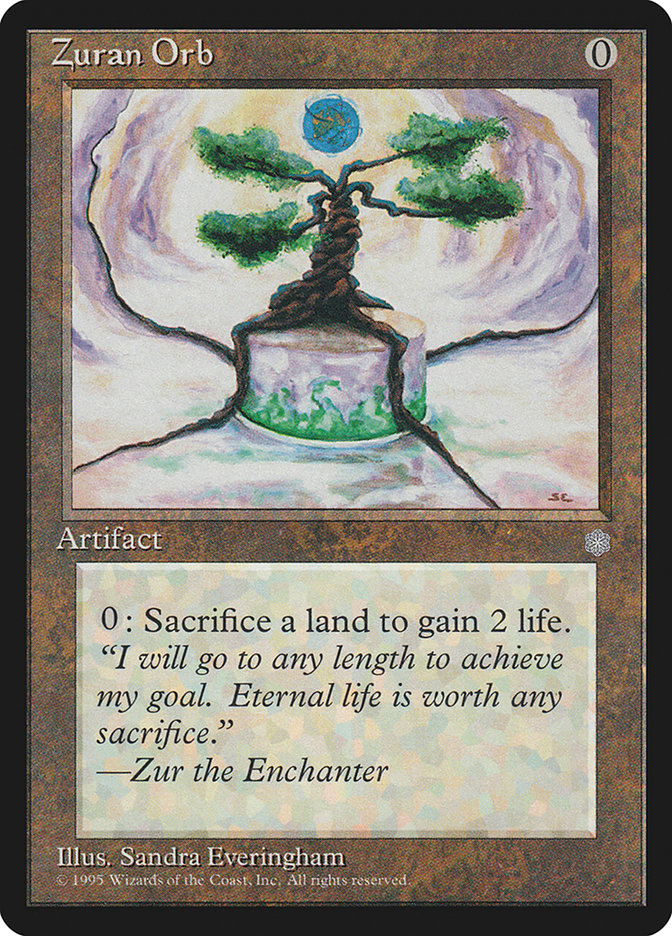
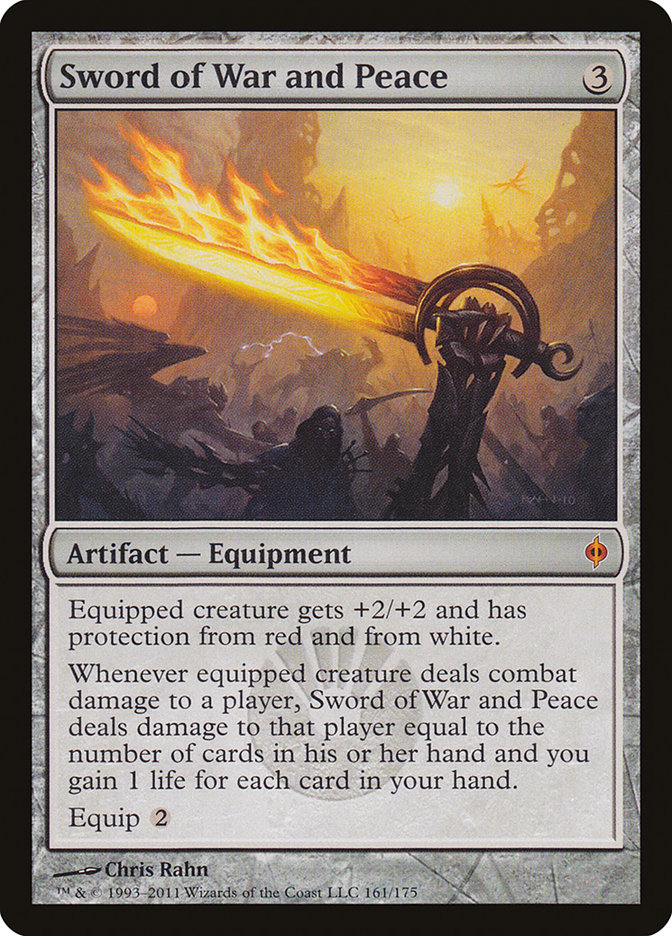
Burn cards are one of the few things you’re not well-prepared to answer, and these three will help address that fact by letting you defend against red
decks that just want to point spells at your noggin rather than interact. It’s probably not something you’ll run into often, but people might actually play
along that vector and you’ll want to be able to address it – and since you’re so well-suited to answer cards in play already, this is exactly the sort of
thing you’d want to dedicate a sideboard towards.
The last trio of cards is somewhat more peculiar to see here:
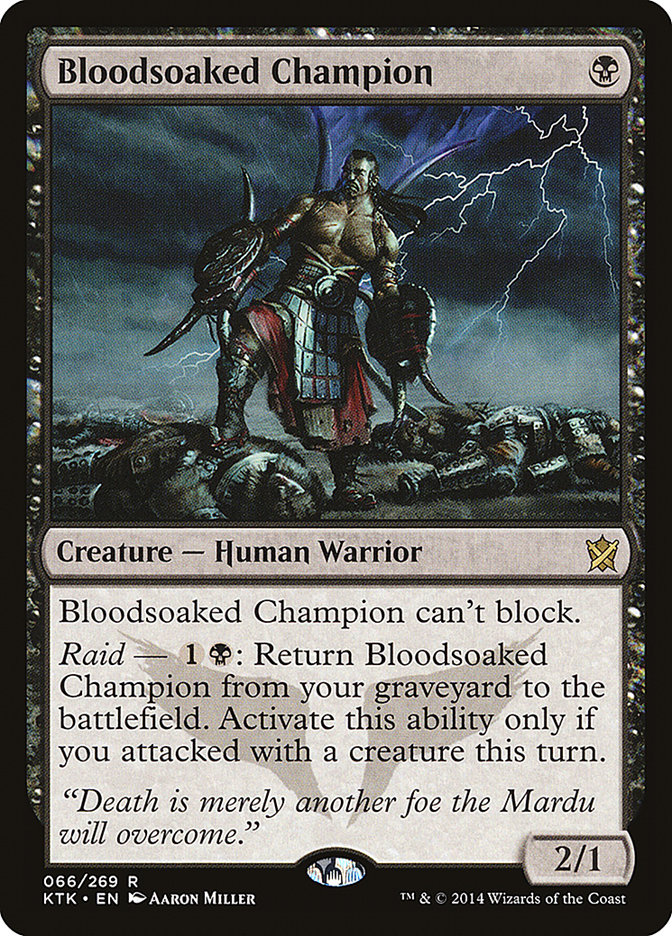
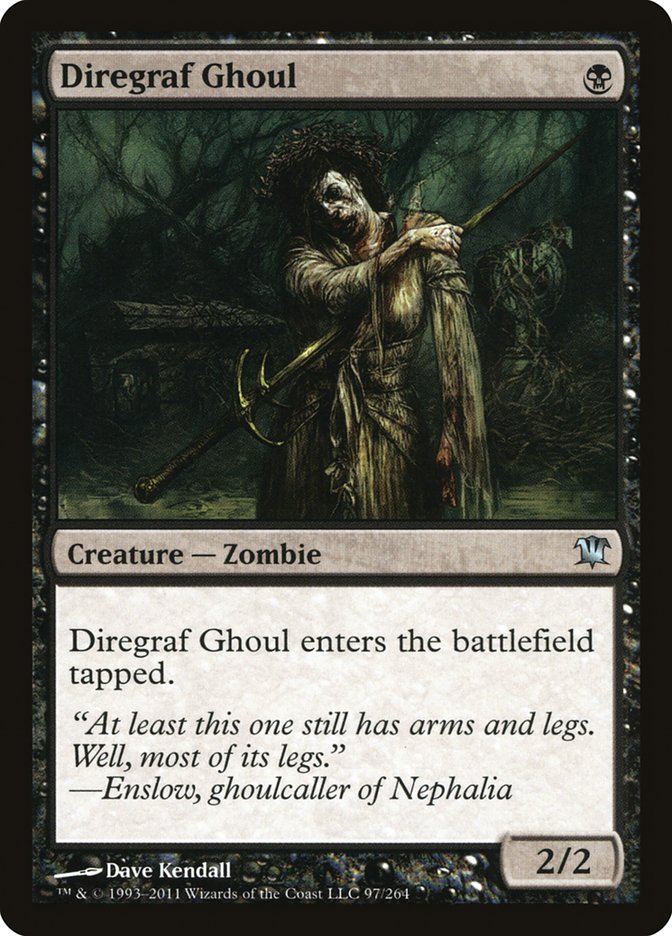
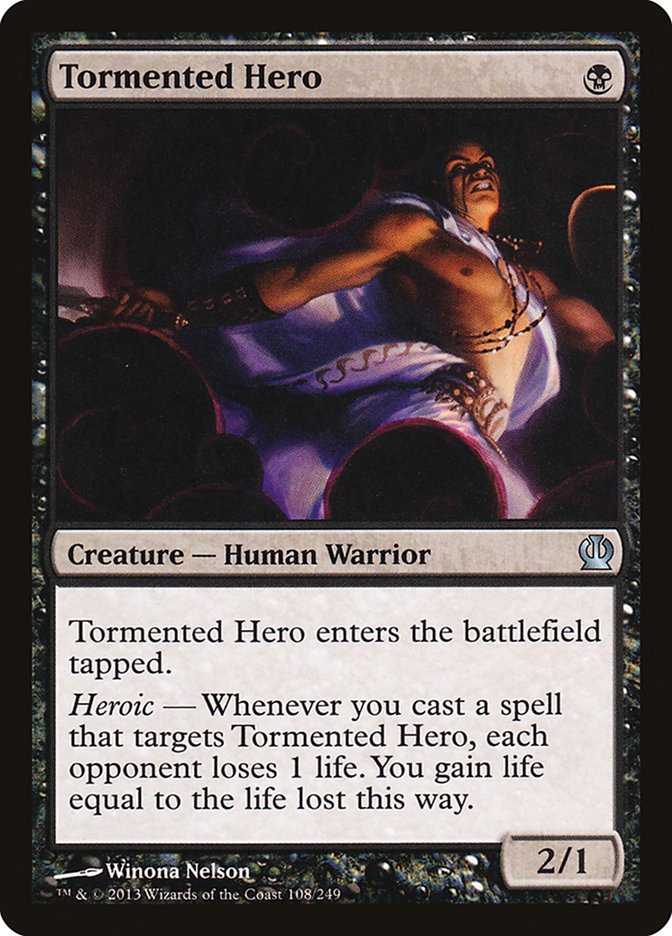
When your Plan A isn’t working because you’re not facing off against a creature-based deck, you’re going to find you have a lot of dead cards that
need to go – and not that many creatures to actually try and win the game with. These three help you shift towards a more beatdown stance by cutting things
like Fleshbag Marauder in favor of two-power one-drops, letting you trim dead weight and speed up your clock at the same time. Against control-
and combo-style decks, this is exactly the sort of shift we often neglect to consider in Constructed formats, but we need to be able to present threats on
a reasonable curve and a bit of disruption to whatever they’re trying to do, but your deck has exactly one one-drop: Deathrite Shaman. You’re already
likely to have a two-drop worth playing and can always cast your Tiny Leader for three mana, but against some opponents we are going to want to play a
threat on the first three turns and then start clearing the way (or targeting their hand) to help them go the distance. This is also part of why it was
important to add that Treetop Village earlier – it’s okay at blocking but not really there to do that, it’s here to help keep pressure on the
format’s solid three-mana planeswalkers and add a threat that is hard for your average control spell to handle so that we can present the beatdown when
that’s needed.
Controlling the board is great, but dead opponents cast no spells, and sometimes the best answer is to get a bit dumber instead of a bit smarter and just beat down.
Putting it all together, we get two decks: the more-expensive version that doesn’t have specific price limits in mind, and the cheaper version that is
friendlier to the budget and tries to keep it reasonably cheap while we’re at it. First we have the low-powered version, which gave up on fetchlands and
Deathrite Shaman in favor of a reasonable budget instead:
Creatures (11)
- 1 Moriok Rigger
- 1 Eternal Witness
- 1 Hunted Horror
- 1 Fleshbag Marauder
- 1 Sylvok Replica
- 1 Moriok Replica
- 1 Glissa, the Traitor
- 1 Scavenging Ooze
- 1 Burnished Hart
- 1 Rakshasa Deathdealer
- 1 Merciless Executioner
Lands (20)
Spells (19)
- 1 Powder Keg
- 1 Oversold Cemetery
- 1 Trinisphere
- 1 Sword of Light and Shadow
- 1 Oblivion Stone
- 1 Lightning Greaves
- 1 Viridian Longbow
- 1 Scrabbling Claws
- 1 Tangle Wire
- 1 Pernicious Deed
- 1 Lotus Petal
- 1 Urza's Bauble
- 1 Engineered Explosives
- 1 Mishra's Bauble
- 1 Ratchet Bomb
- 1 Mimic Vat
- 1 Nihil Spellbomb
- 1 Abrupt Decay
- 1 Toxic Deluge

Then we have the high-powered version, which accepted that you needed to throw some more fetchlands at the manabase if you wanted to make Deathrite Shaman
work right, but which also got to keep some pricier additions as well in Maze of Ith and Sensei’s Divining Top:
Creatures (11)
- 1 Moriok Rigger
- 1 Eternal Witness
- 1 Hunted Horror
- 1 Fleshbag Marauder
- 1 Sylvok Replica
- 1 Moriok Replica
- 1 Glissa, the Traitor
- 1 Deathrite Shaman
- 1 Burnished Hart
- 1 Rakshasa Deathdealer
- 1 Merciless Executioner
Lands (21)
Spells (18)

The cheap version comes to $105.50 – “cheap” is contextual here, it’s still expensive to add cards like Thoughtseize and Abrupt Decay to any deck
these days, and the top prices offered by Commander format staples like Shizo, Death’s Storehouse are getting pretty high lately. The more-expensive
version adds at least a hundred dollars on top of that just from five fetchlands, a Top, and a Maze of Ith… but if these are all the sorts of things you
have anyway and you’re willing to dig out the fetchlands in order to make that Deathrite Shaman work for you, that’s really the decision that’s being asked
for here and it’s up to you to make it, Rob. As always, for your participation in this week’s edition of Dear Azami you’ll receive a $20 coupon to
the StarCityGames.com store, which is basically eaten up by the top item on the list once we price out our additions on a card-for-card basis. Thankfully
that Liliana of the Veil in the sideboard is free since it came from your maindeck, or else we’d be adding even more – ever since Pro Tour Fate Reforged
she’s gone up to over $80 a copy thanks to her strength and ubiquity in Modern, and that price is not expected to go down anytime soon since Innistrad
cards will not be present in Modern Masters II.
Priced out individually, those additions went like this:
| Diregraf Ghoul | 0.25 |
| Dragon’s Claw | 0.25 |
| Merciless Executioner | 0.25 |
| Viridian Longbow | 0.25 |
| Tormented Hero | 0.29 |
| Urza’s Bauble | 0.29 |
| Scepter of Fugue | 0.49 |
| Zuran Orb | 0.89 |
| Powder Keg | 1.29 |
| Okina, Temple to the Grandfathers | 1.49 |
| Treetop Village | 1.75 |
| Bloodsoaked Champion | 1.99 |
| Mimic Vat | 2.59 |
| Lightning Greaves | 5.99 |
| Scavenging Ooze | 6.05 |
| Inquisition of Kozilek | 6.59 |
| Shizo, Death’s Storehouse | 7.09 |
| Engineered Explosives | 8.05 |
| Toxic Deluge | 11.05 |
| Abrupt Decay | 12.69 |
| Sword of War and Peace | 15.69 |
| Thoughtseize | 20.19 |
While I don’t think I’d want to work on Tiny Leaders decks every week – there are only so many legendary creatures that cost three mana or below, we’d run out pretty quickly – it was interesting to explore a Commander-like format with a defined metagame and real metagame considerations like “sideboarding” to have to keep in mind as we built the deck as well. Unfortunately, our email is down for the next few weeks – but once it’s back up again, feel free to contact us with any Tiny Leaders submissions you might have as well, and we’ll look into a few more of them from time to time.
Want to submit a deck for consideration to Dear Azami? We’re always accepting deck submissions to consider for use in a future article, like Ryan’s Niv-Mizzet, the Firemind deck or Ben’s Shu Yun, the Silent Tempest deck. Only one deck submission will be chosen per article, but being selected for the next edition of Dear Azami includes not just deck advice but also a $20 coupon to StarCityGames.com!
Like what you’ve seen? Feel free to explore more of Dear Azami here, in the Article Archives! Feel free to follow Sean on Facebook… sometimes there are extra surprises and bonus content to be found over on his Facebook Fan Page, as well as previews of the next week’s column at the end of the week!
And feel free to check Jess’s own Command of Etiquette column on Hipsters of the Coast for more Commander and casual content!
